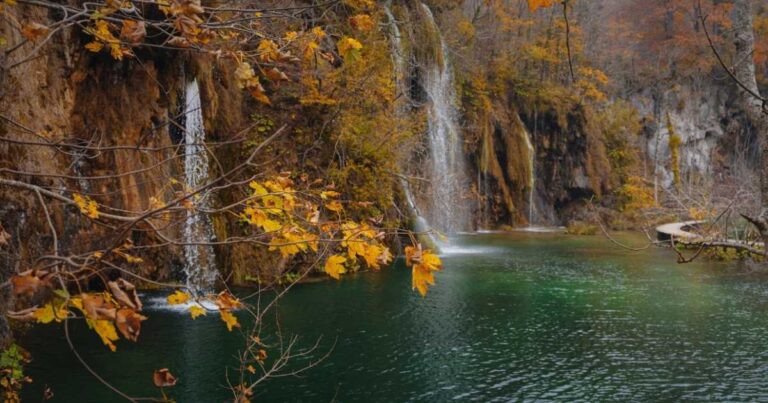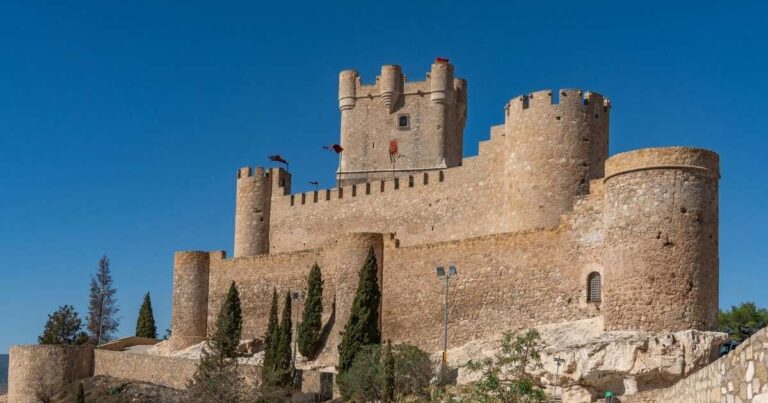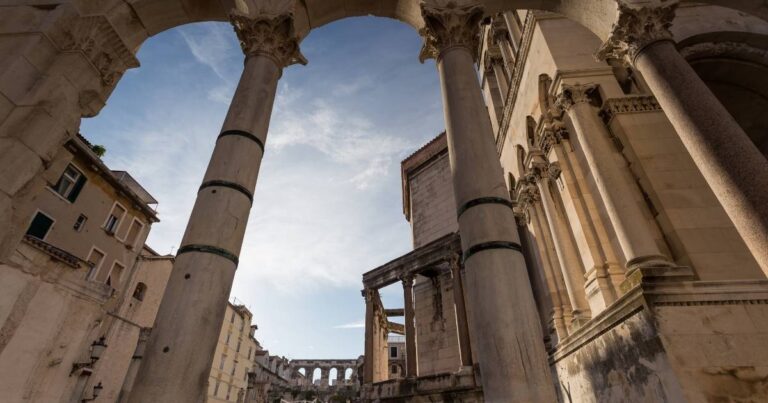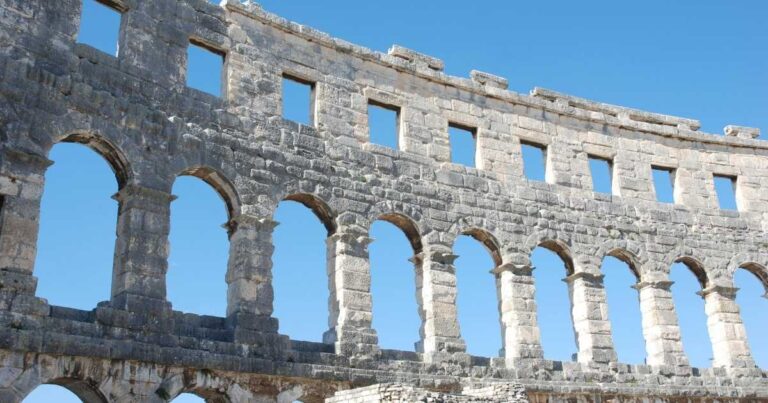Explore the captivating blend of history and beauty in Croatia, a land where ancient Roman sites whisper tales of emperors and empires. From the stunning shores of Dalmatia to the well-preserved Roman ruins, Croatia offers a unique window into the world of the Roman empire. Journey with us as we uncover the Roman heritage woven into the fabric of this Croatian paradise.
Introduction to Croatia’s Roman Heritage
The Significance of the Roman Empire in Croatia
The Roman empire left an indelible mark on Croatia, transforming its landscape, culture, and society. The Roman military presence secured the Adriatic coast, paving the way for the construction of Roman city centers and infrastructure. These advancements facilitated trade, governance, and the spread of Roman culture, which profoundly influenced the history of Croatia. This Roman influence shaped the future of the region for centuries to come.
Overview of Roman History in the Region
Croatia’s Roman history began in the century BC with the Roman expansion into the province of Illyricum. This region, including Dalmatia, became a vital part of the Roman state. Roman emperors like Augustus consolidated power, establishing Roman rule and fostering economic growth. This era witnessed the construction of Roman sites, showcasing Roman architecture and engineering prowess that remain visible throughout modern Croatia.
Understanding the Impact of Roman Culture in Croatia
Roman culture significantly shaped the Croatian identity, influencing language, law, and social structures. The ancient Romans introduced advancements in agriculture, urban planning, and governance, laying the foundation for future development. The legacy of the Roman period is evident in the Roman ruins, Roman architecture, and cultural practices that continue to resonate in Croatia, providing valuable insights into the history of Croatia.
Exploring Ancient Roman Sites in Croatia
The Magnificent Diocletian’s Palace in Split
Diocletian’s Palace in Split, a World Heritage site, stands as a testament to the grandeur of the Roman empire. Built by the Roman emperor Diocletian in the century AD, this Roman palace transformed into the heart of the city of Split after the fall of the Western Roman empire. Today, visitors can explore the Roman ruins, wander through the Roman forum, and marvel at the Roman architecture that blends seamlessly with modern life.
Other Notable Roman Sites Across Croatia
Beyond Diocletian’s Palace in Split, Croatia boasts numerous Roman sites that offer glimpses into its Roman history. Several cities provide fascinating examples of this Roman influence, including:
- Pula, known for its well-preserved Roman amphitheater.
- Salona, with its archaeological wonders revealing the Roman way of life.
Even Dubrovnik, known for its medieval city walls, bears traces of its Roman past, adding layers to Croatia’s and Dalmatia’s story.
Preservation Efforts for Roman Heritage
Protecting Croatia’s Roman heritage is a priority, with ongoing archaeological excavations and conservation projects. These efforts aim to preserve Roman sites and artifacts for future generations. Understanding the historical context of these sites enhances their appreciation, fostering cultural tourism and education about the Roman empire. By preserving these treasures, Croatia honors its Roman roots and ensures that this legacy endures.
Dalmatia: A Region Rich in Roman Legacy
Historical Overview of Dalmatia in the Roman Era
The history of Croatia is inextricably linked with Dalmatia, a region that thrived under Roman rule. As part of the Roman province of Dalmatia, Dalmatia became a crucial Adriatic hub, witnessing significant Roman influence. The Roman military secured the coastline, enabling trade and cultural exchange, which shaped the region’s identity. This period laid the groundwork for the Croatian identity, blending Illyrian roots with Roman advancements.
Key Roman Sites in Dalmatia
Dalmatia boasts several Roman sites, each offering a unique glimpse into the region’s past. These sites include:
- Diocletian’s Palace, a World Heritage site and iconic landmark, and
- The Roman amphitheater in Pula, demonstrating the grandeur of Roman architecture.
Furthermore, Salona, a once bustling Roman city, showcases archaeological remains of temples, theaters, and residential areas, further solidifying the tangible connections to the Roman empire and ancient Roman life in Dalmatia.
The Influence of Roman Architecture on Dalmatian Cities
Roman architecture profoundly influenced the urban landscape of Dalmatian cities, shaping their layout and infrastructure. Roman city planning included forums, temples, and public baths, enhancing the quality of life for its inhabitants. Diocletian’s Palace in Split, with its intricate design and blend of residential and military functions, exemplifies Roman architectural prowess. This Roman influence endures, contributing to the unique charm of modern Croatia.
The Role of Dubrovnik in Roman Times
History of Dubrovnik During the Roman Empire
While Dubrovnik is renowned for its medieval city walls, its history extends back to Roman times. During the Roman empire, the area around Dubrovnik was part of the Roman province of Dalmatia, though its significance grew later under the Byzantine empire and other influences. Archaeological findings suggest Roman presence, laying the groundwork for the city’s history as a maritime and trade hub. Understanding Dubrovnik’s early Roman connections enriches its historical narrative.
The Transition from Roman Rule to the Republic of Croatia
The transition from Roman rule to the Republic of Croatia involved complex historical shifts. After the fall of the Western Roman empire, Dalmatia experienced periods of Byzantine empire, Venetian, and other powers before the emergence of the Croatian kingdom. The history of Croatia saw the gradual consolidation of Croatian territories, leading to the eventual establishment of the modern Republic of Croatia. The legacy of the Roman period continued to influence legal and administrative structures during this transition.
Modern-day Dubrovnik and Its Roman Connections
In modern Croatia, Dubrovnik stands as a testament to its layered history, where Roman influences intertwine with medieval and modern elements. While Roman ruins may not dominate the landscape as in Split or Pula, archaeological discoveries reveal ancient Roman presence. The city’s history reflects a blend of cultures, with the Roman legacy contributing to its unique identity. Exploring Dubrovnik offers a journey through time, connecting visitors to its Roman roots and subsequent developments.
Impact of the Roman Empire on Modern Croatia
How Roman History Shapes Croatian Identity
Roman history has deeply shaped Croatian identity, influencing language, customs, and legal systems. The ancient Romans introduced advanced administrative practices, which laid the foundation for governance in modern Croatia. Elements of Roman culture, such as urban planning and architectural styles, have been integrated into Croatian society. Furthermore, Roman legal traditions have contributed to the development of Croatian law, forging a lasting connection between the Roman empire and the Republic of Croatia.
Tourism and Economic Benefits from Roman Heritage
Tourism centered around Roman sites in Croatia generates significant economic benefits, attracting visitors interested in the Roman empire. The well-preserved Roman ruins, such as Diocletian’s Palace in Split and the Roman amphitheater in Pula, draw tourists from around the world. This influx of visitors supports local businesses, creates employment opportunities, and stimulates regional development. The Roman heritage thus plays a crucial role in bolstering Croatia’s economy and promoting its cultural appeal, especially in areas like Dalmatia.
Future of Roman Sites in Croatia: Challenges and Opportunities
The future of Roman sites in Croatia presents both challenges and opportunities. Preservation efforts are essential to protect these historical treasures from environmental damage and urban development. Sustainable tourism practices can help manage visitor flow and minimize negative impacts on archaeological sites. Investing in archaeological research and site management can uncover new discoveries and enhance the visitor experience. By addressing these challenges, Croatia can ensure that its Roman heritage continues to thrive, offering educational and economic benefits for generations to come.
Conclusion
Recap of Key Points
In summary, Croatia boasts a rich Roman history, with ancient Roman sites scattered throughout the country, especially in Dalmatia. The Roman empire’s influence is evident in landmarks like Diocletian’s Palace in Split and Pula, as well as in the cultural and legal systems. Roman architecture has shaped Croatian cities, while ongoing preservation efforts aim to protect this valuable Roman heritage. Tourism related to Roman sites provides significant economic benefits, and sustainable practices are crucial for their future.
Final Thoughts on the Roman Influence in Croatia
The Roman influence in Croatia is undeniable, weaving itself into the fabric of the nation’s identity. From the Roman emperors who once ruled the land to the Roman ruins that still stand, the legacy of the Roman empire endures. By appreciating and preserving this Roman heritage, Croatia honors its past while enriching its present and future. Exploring Croatia is akin to stepping back in Roman times, offering a unique and profound connection to the ancient Roman world.
FAQs about Croatia’s Roman Heritage
What are the most important Roman sites to visit in Croatia?
When exploring Croatia, several Roman sites deserve your attention. These locations offer tangible connections to the Roman Empire, illustrating the profound Roman influence on the Croatian landscape and culture, particularly in Dalmatia. Key sites include:
- Diocletian’s Palace in Split, a World Heritage site showcasing remarkable Roman architecture.
- Pula’s impressive Roman amphitheater.
- Salona, with its extensive archaeological remains providing insights into a thriving Roman city.
How did the Roman Empire influence Croatian culture?
The Roman empire profoundly shaped Croatian culture by introducing advancements in governance, architecture, and language. The ancient Romans implemented legal systems and administrative practices that influenced the history of Croatia. Roman architecture is visible in numerous Roman sites, and Roman culture integrated into daily life. This legacy continues to resonate in modern Croatia, influencing various aspects of Croatian society, highlighting how Roman rule left an indelible mark on the region, especially in Dalmatia.
Are there any guided tours available for Roman sites in Dalmatia?
Yes, numerous guided tours are available for Roman sites in Dalmatia. These tours provide expert insights into the archaeological significance and historical context of locations such as Diocletian’s Palace in Split and Salona.
What is the historical significance of Diocletian’s Palace?
Diocletian’s Palace holds immense historical significance as one of the best-preserved Roman palace complexes. Built by the Roman emperor Diocletian in the century AD, it showcases intricate Roman architecture and engineering. After the fall of the Western Roman empire, the Roman palace transformed into the city of Split, becoming the heart of the region. Its preservation provides valuable insights into Roman times, making it a pivotal site for understanding Croatia’s Roman past and the Roman empire.
How can I learn more about Roman history in Croatia?
To delve deeper into the Roman history of Croatia, visiting Roman sites such as Diocletian’s Palace in Split and Salona is essential.







